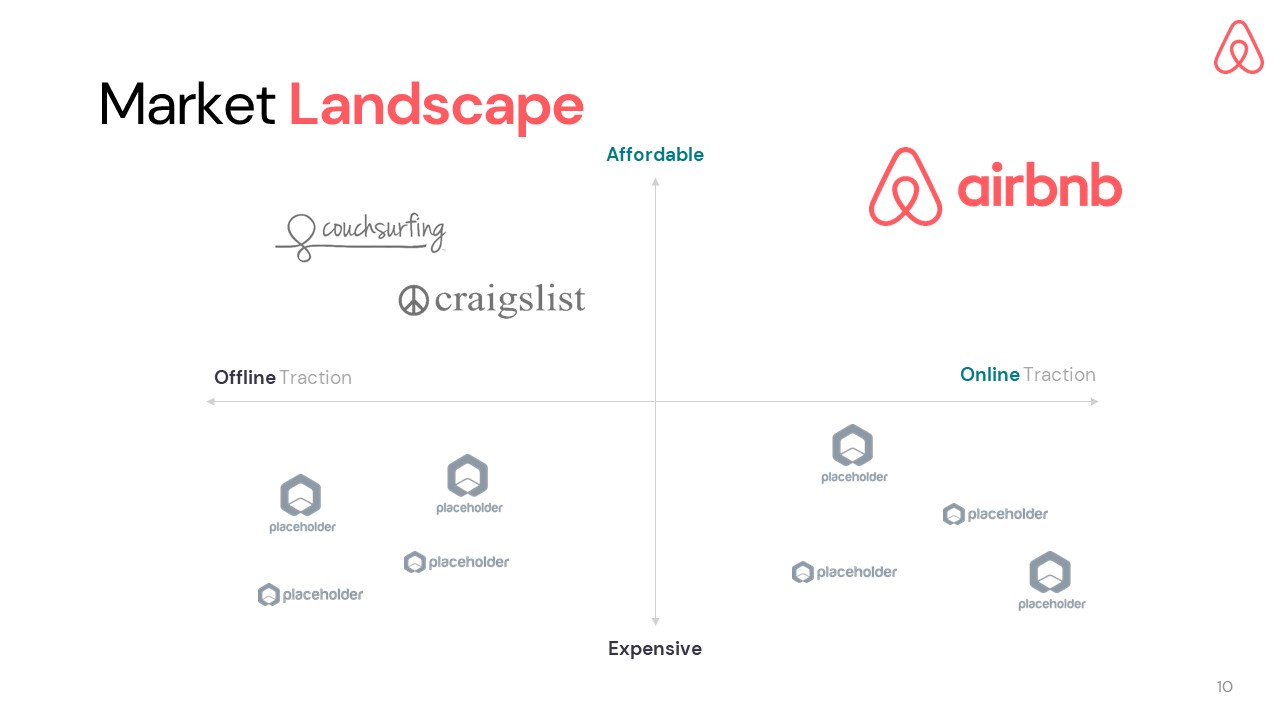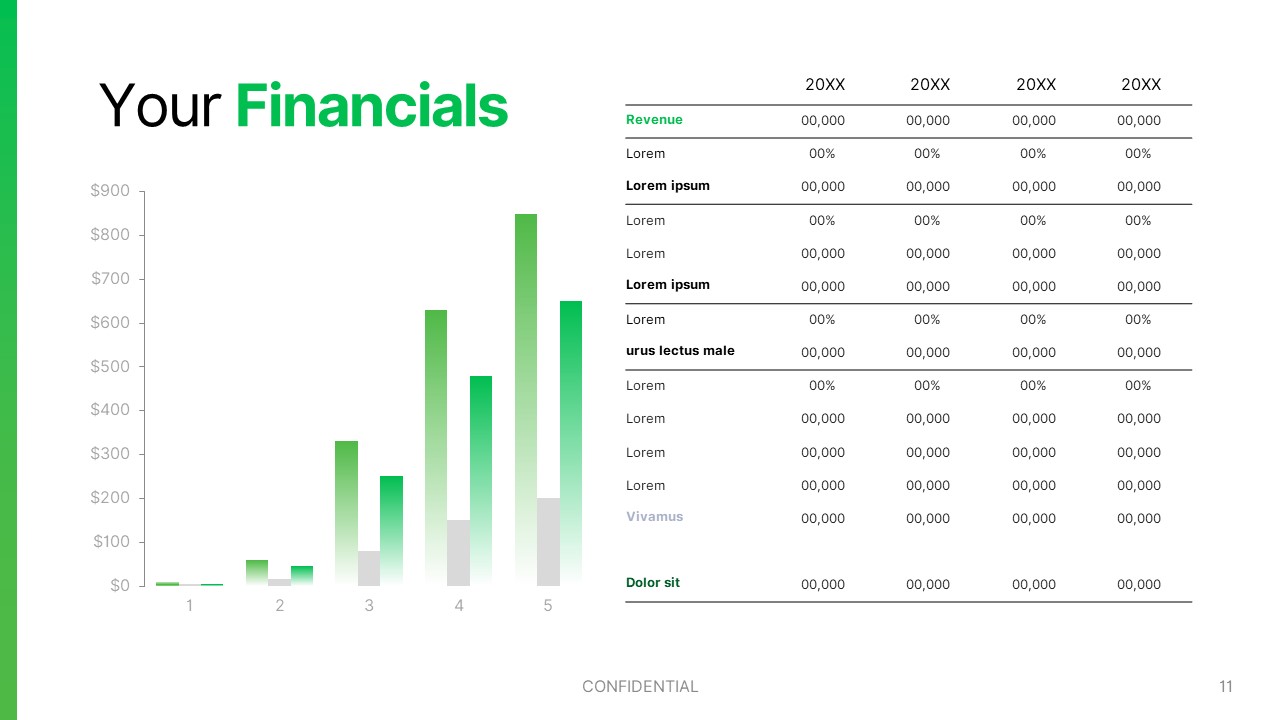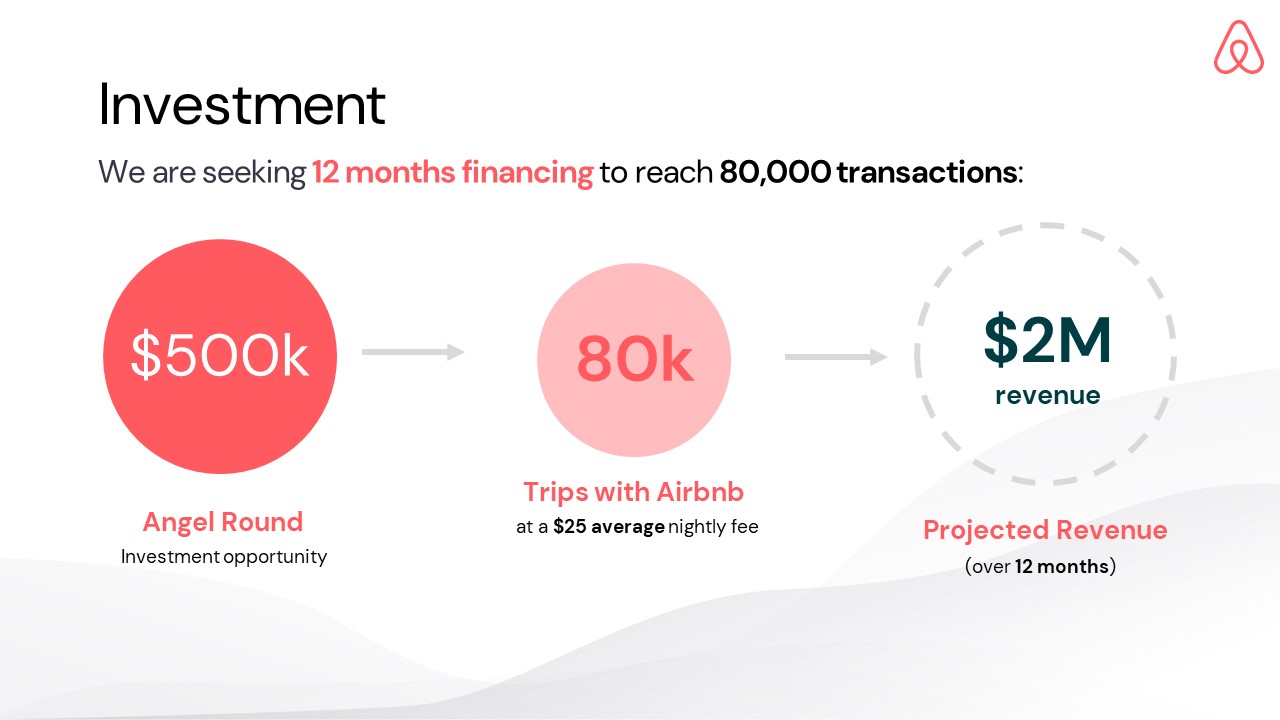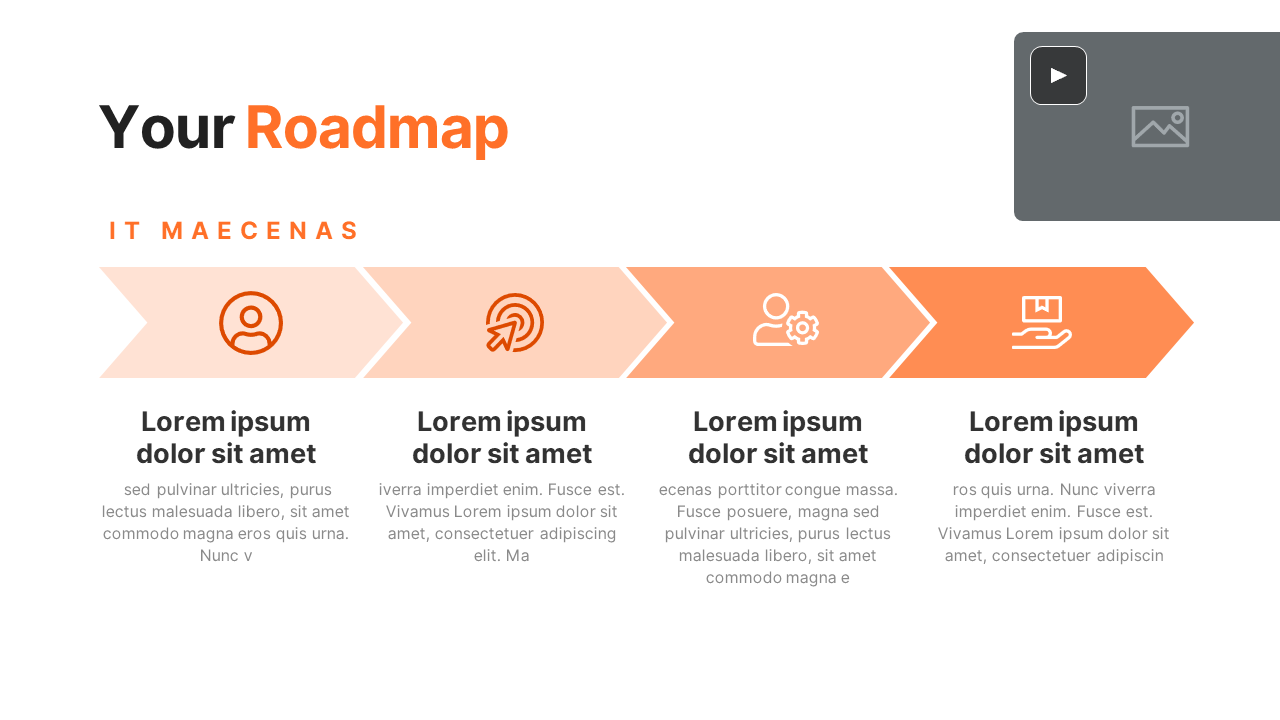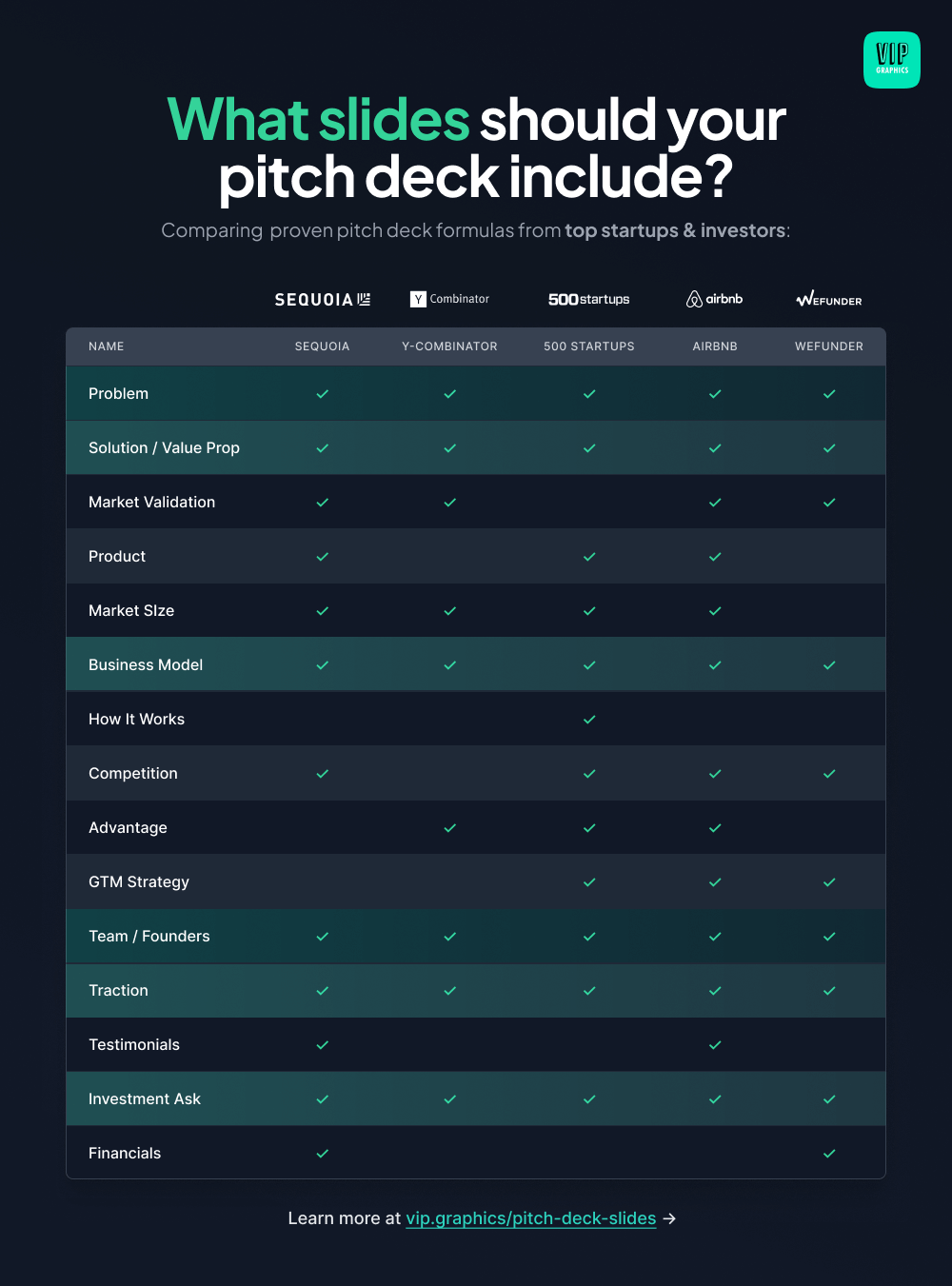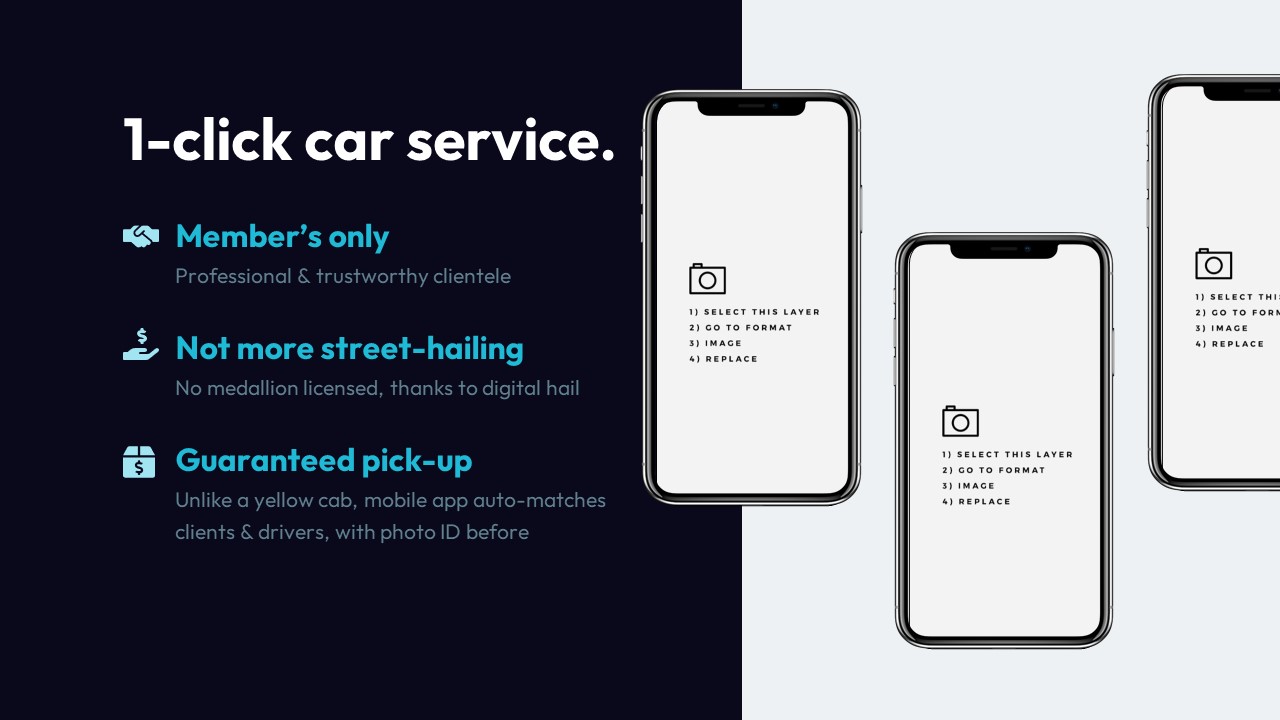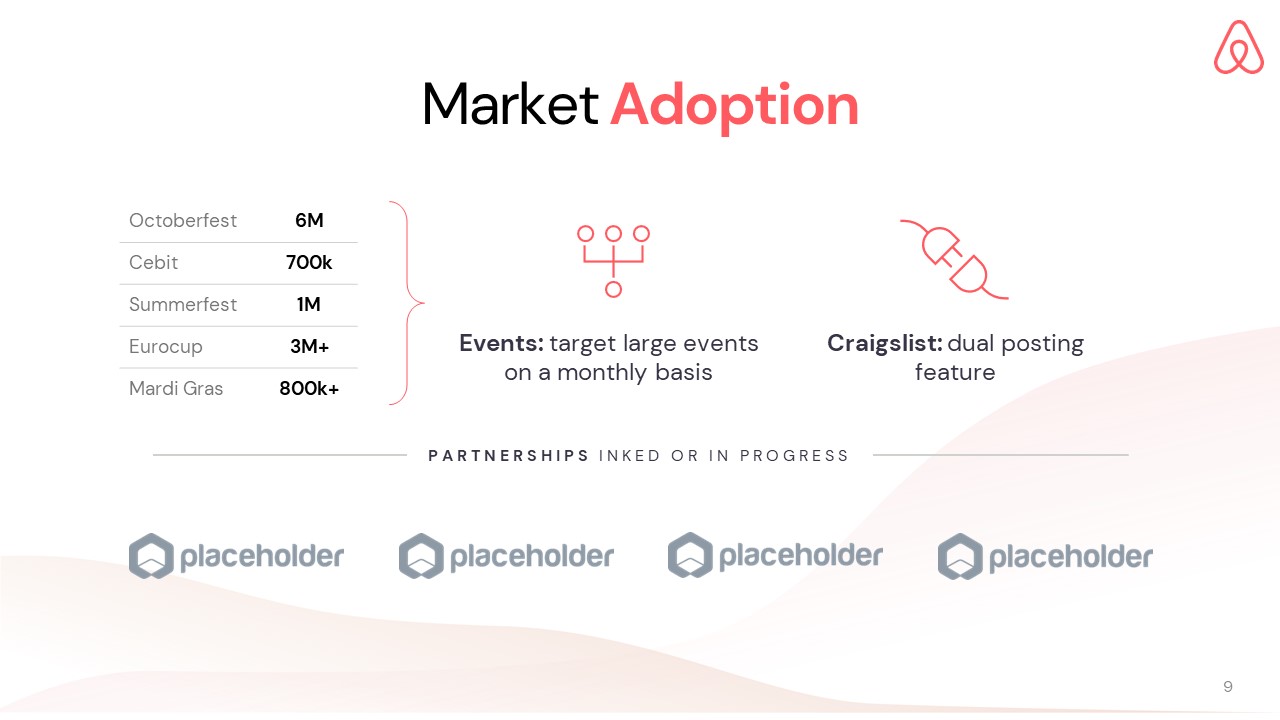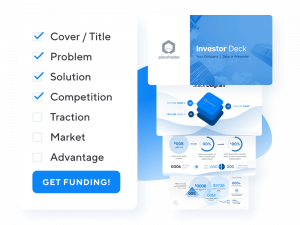
Pitch Deck Slides Guide
Follow this step-by-step guide to create an investor-ready pitch deck with the right slides to answer all the questions VCs are looking for (Updated for 2025!)
As a startup founder, your pitch deck is one of the most important tools in your arsenal (especially at the early stages). As the name implies, the purpose of a pitch deck is to pitch your ideas to potential investors (or sometimes customers and partners).
Companies often develop several version of their pitch deck, such as a “presenter” deck (meant to accompany an oral pitch) or “reader deck” (something that investors can read and understand on their own).
This guide focuses on the topics you’ll find in an investor pitch deck for a startup seeking to raise venture capital funding. Please note, we have written separate guides for others types of pitch decks and investor presentations that are tailored for other purposes (such as retail pitch decks for CPG companies, or show bibles for TV producers, or real estate investor memos).
Investors see hundreds of pitch decks every week (the average VC sees nearly 5,000 a year!) and the only way to stand out is to craft a concise, compelling pitch deck with the information they want to see. Here’s are the slides you should include in your pitch deck:
WHAT VCs SAY:
Get to the point as quickly as possible, a shorter deck is way better
“If you can’t tell the story of the company in 5 minutes, then you’re either overthinking it or you haven’t simplified it down enough. There are a few important things to include [Problem, Solution, Market, Team, Ask], but but just keep it simple and stupid”
— Mike Vernal
Fmr Partner @ Sequoia via NfX
The perfect pitch deck recipe
While there’s no one-size-fits-all formula for creating the perfect pitch deck, many successful startups have relied on proven formulas to create winning presentations. We’ll take a look at some of the most popular pitch deck formulas used by industry leaders like Airbnb, Sequoia, and Y-Combinator, and explore how you can adapt these strategies to create a winning pitch deck for your own startup.
As you can see in the pitch deck formula comparison infographic, there are minor differences between each recipe. However, some slides (highlighted green) are present in all recipes: it seems that top investors agree every pitch deck should include a Problem, Solution, Advantage, Business Model, Team, Traction, and Ask slide.
While these pages are a “must” for any compelling pitch deck, you will likely want to include some of the other suggested slides to round out your pitch. Important: This list does not necessarily reflect the correct order for your pitch deck, which generally varies based on your company (see quote below).
WHAT VCs SAY:
Order your slides from most to least impressive
“After what do you do (which should come first, that’s pretty clear) and the ask (which should be at the end), the elements in the middle need to be ordered by which is most impressive. If you’ve got a ton of traction, great! Traction should come right after your ‘What You Do’ slide … I think what a lot of people screw up with these decks is they think there’s some super standard format they can’t leave. And they don’t realize that there is flexibility to make your most important points early…You earn every 2 minutes of that meeting….so don’t leave the good stuff until late.”
— Michael Seibel
Partner @ Y Combinator via SaaStr
Ready to build your pitch deck?
Build your investor presentation with the pitch deck template created by the experts who have helped raise billions for top startups and Fortune 100 companies – trusted by hundreds of founders.




